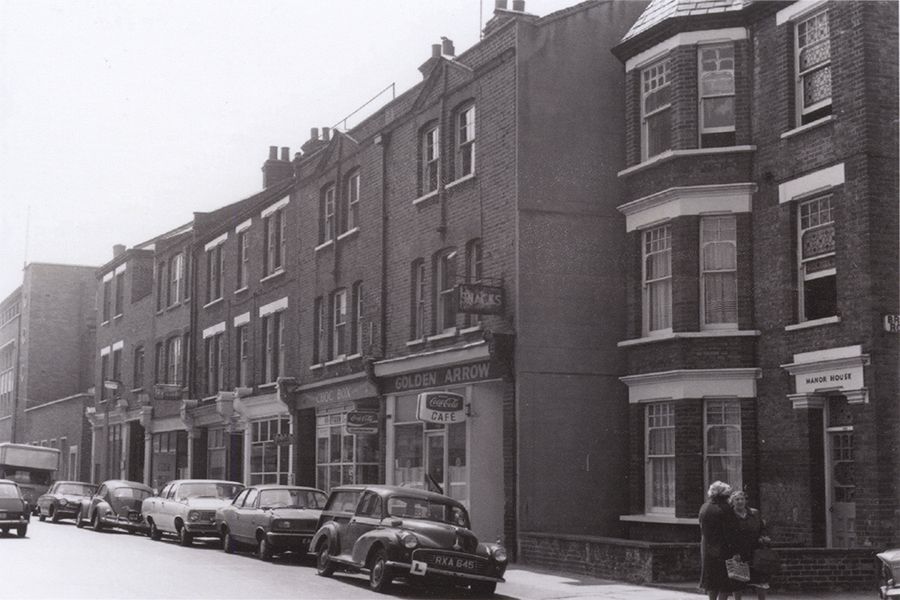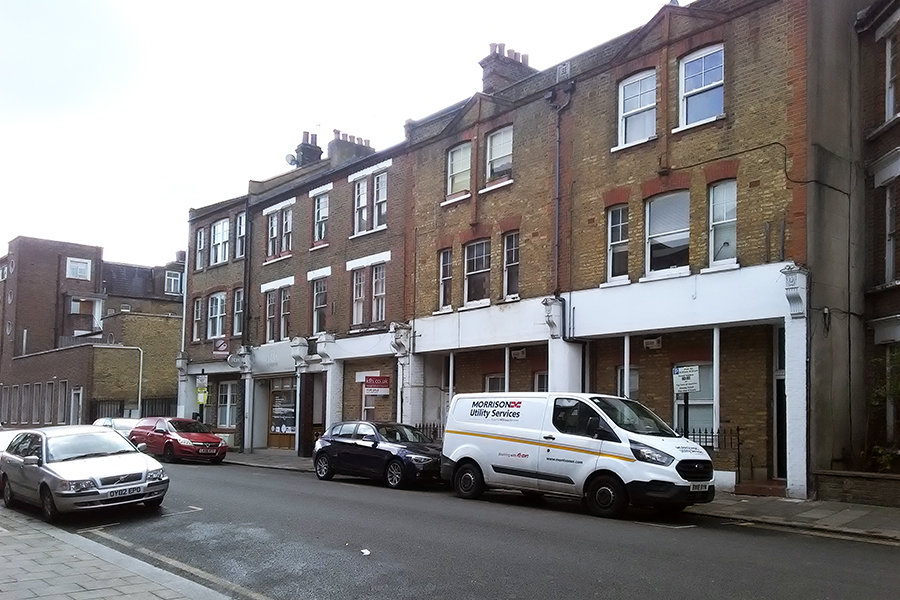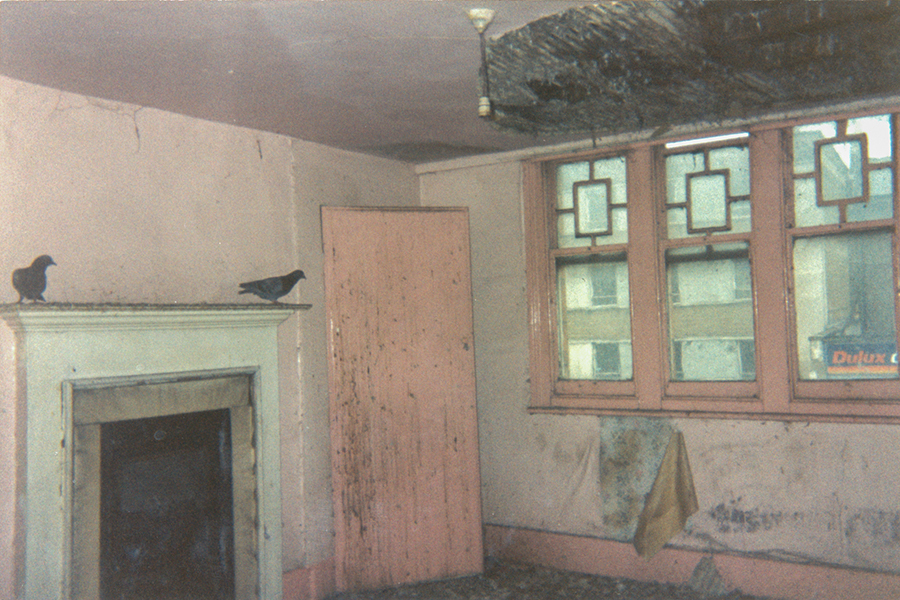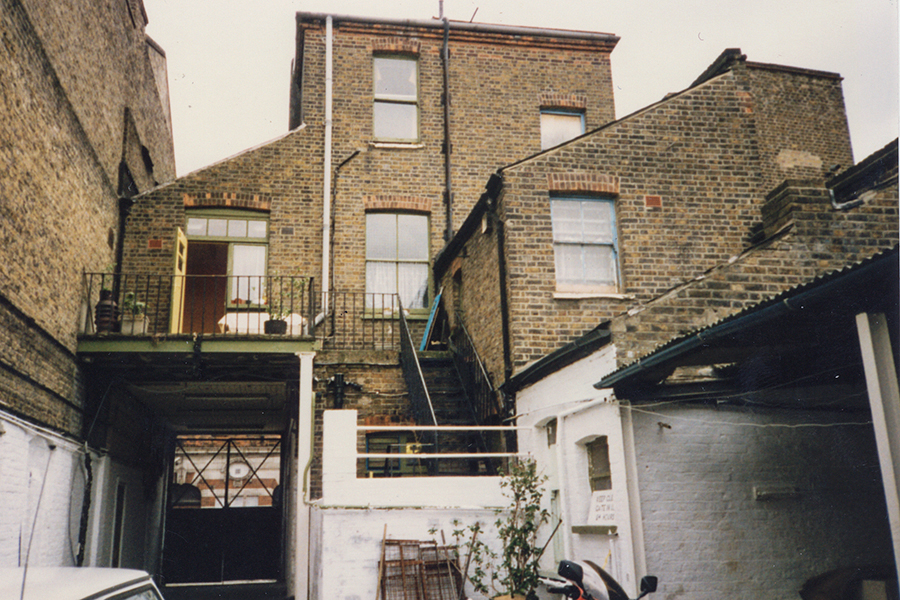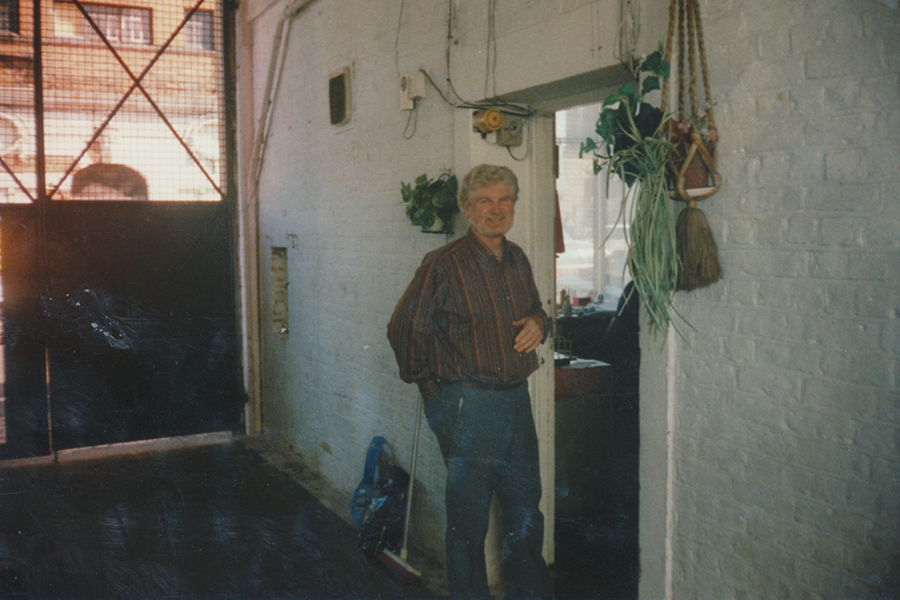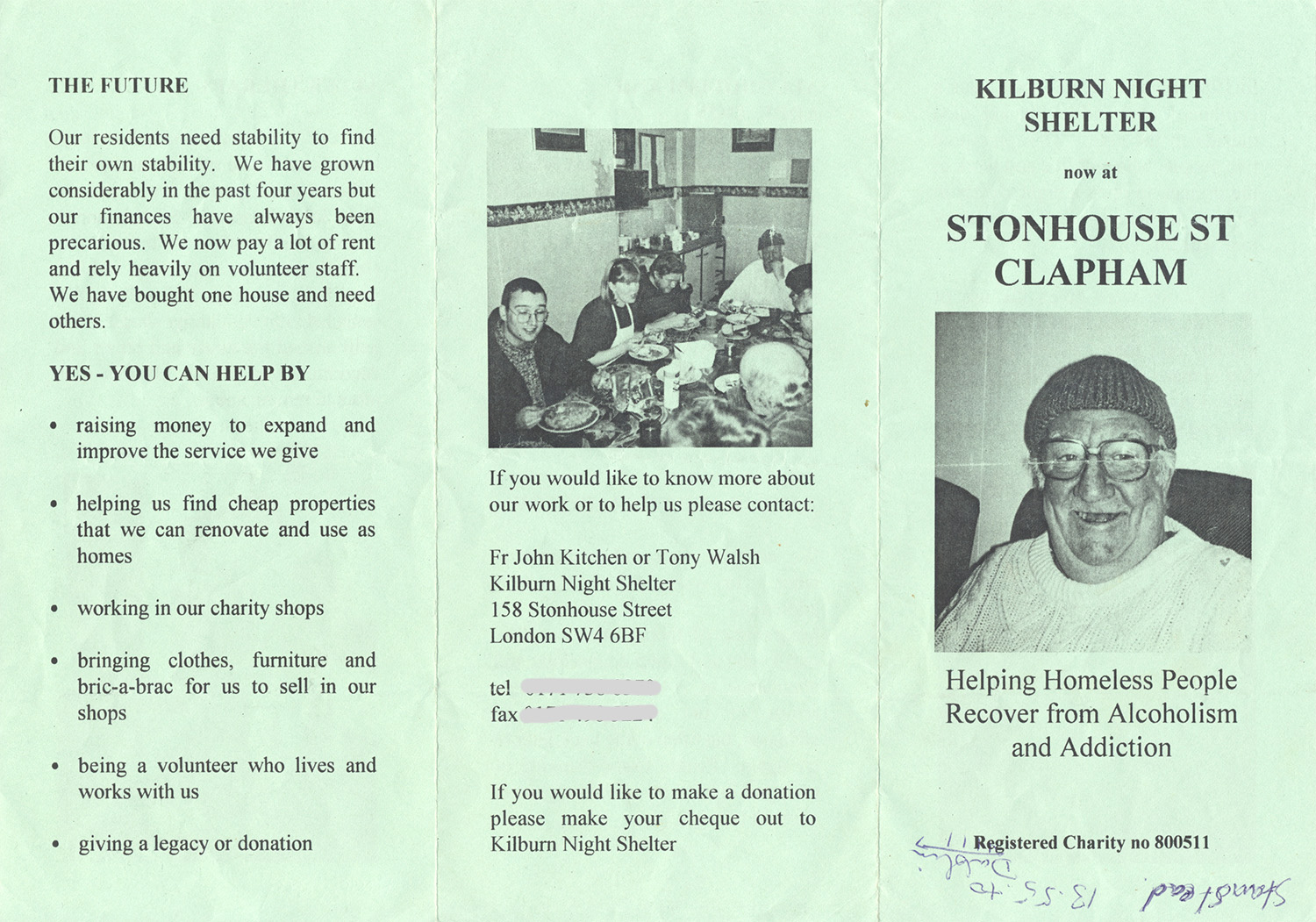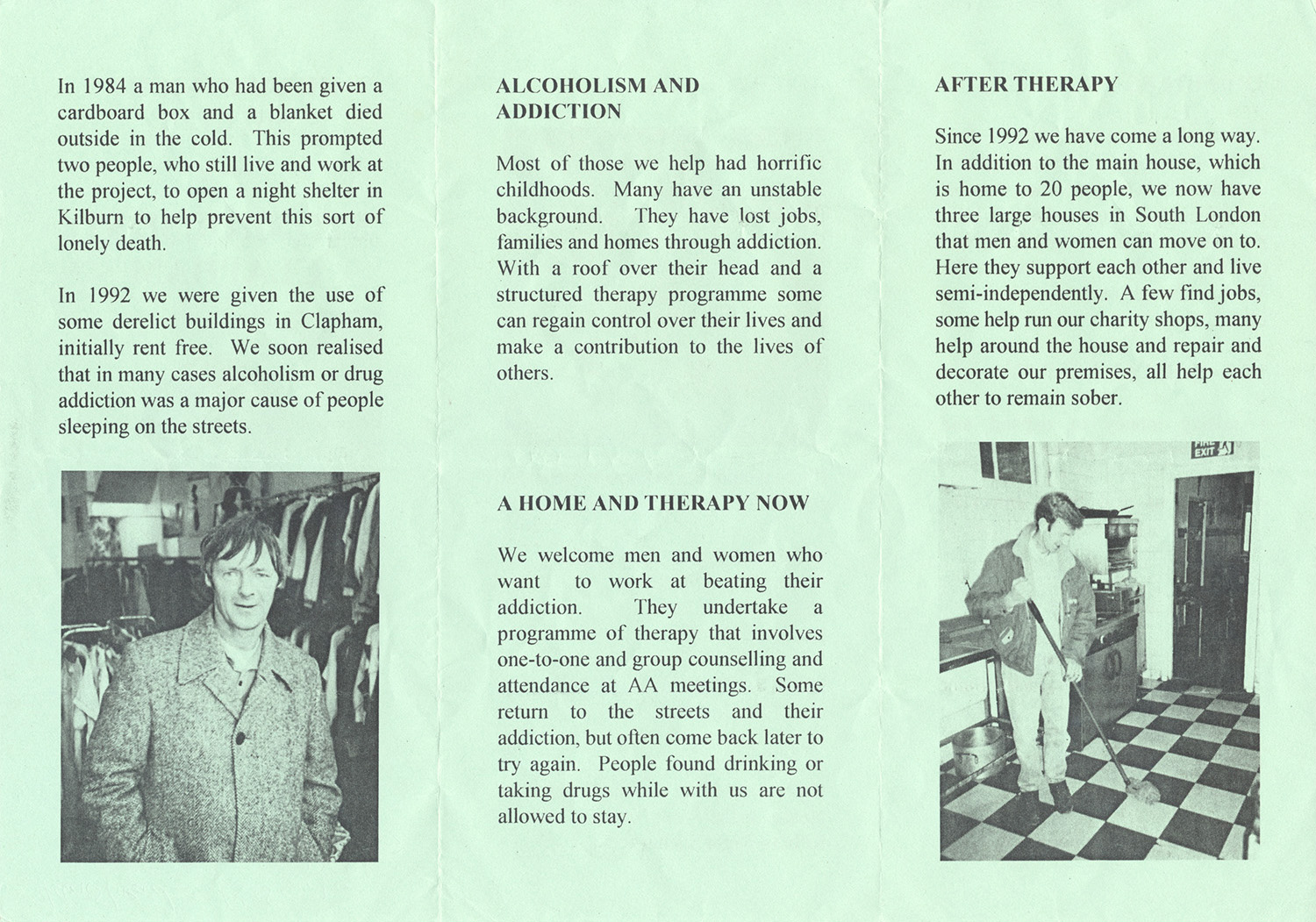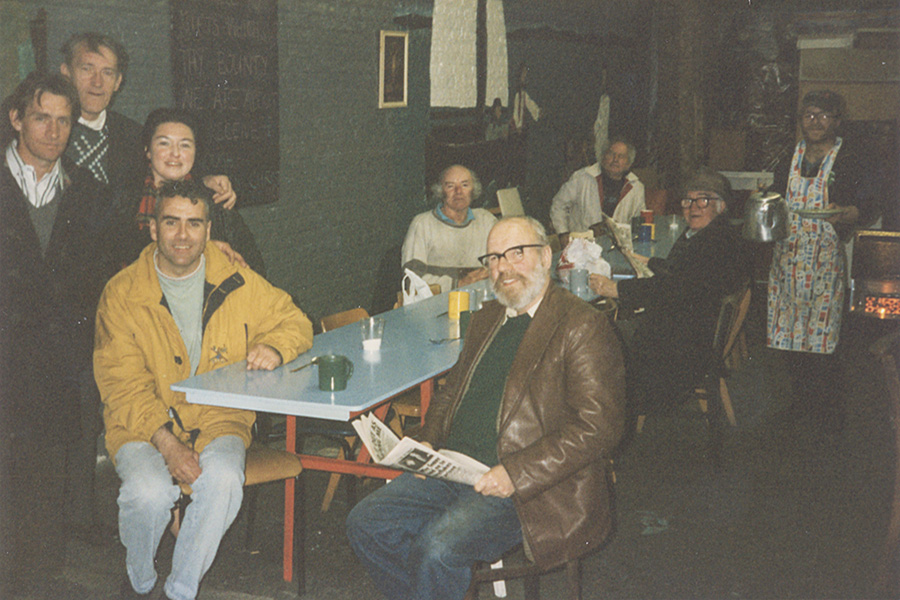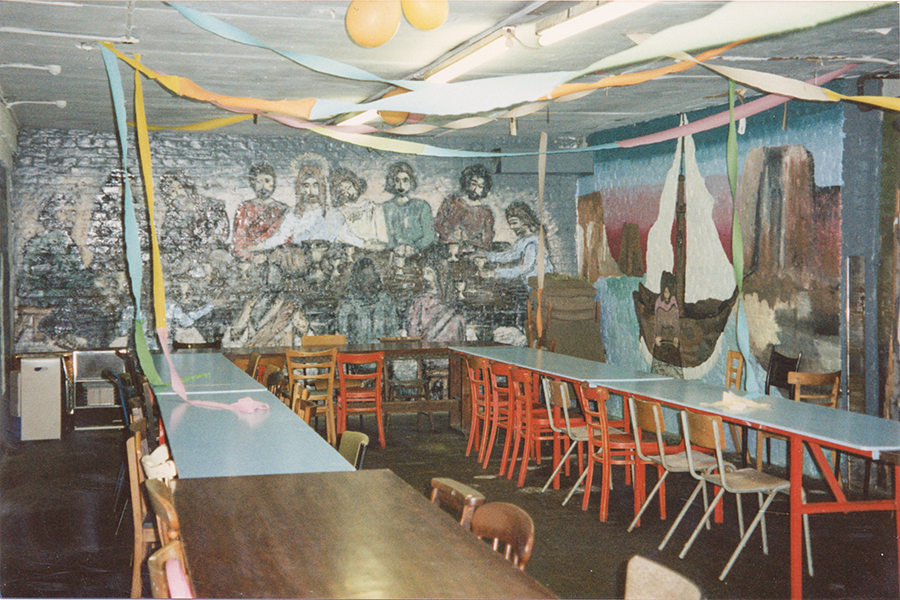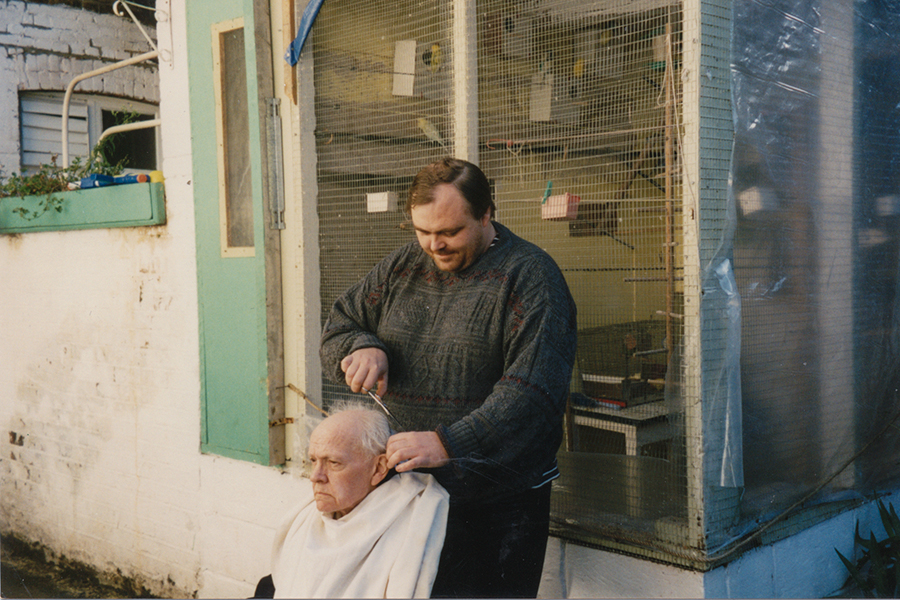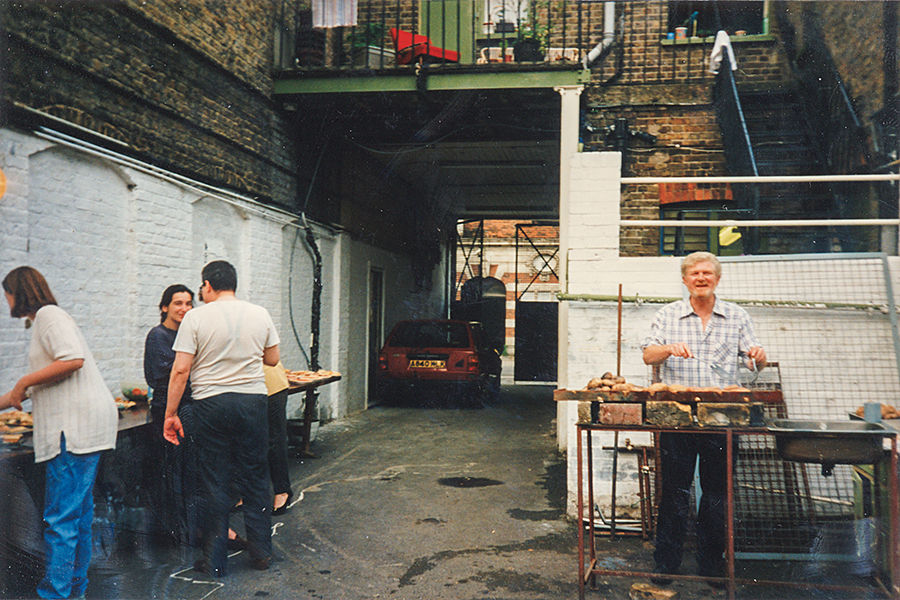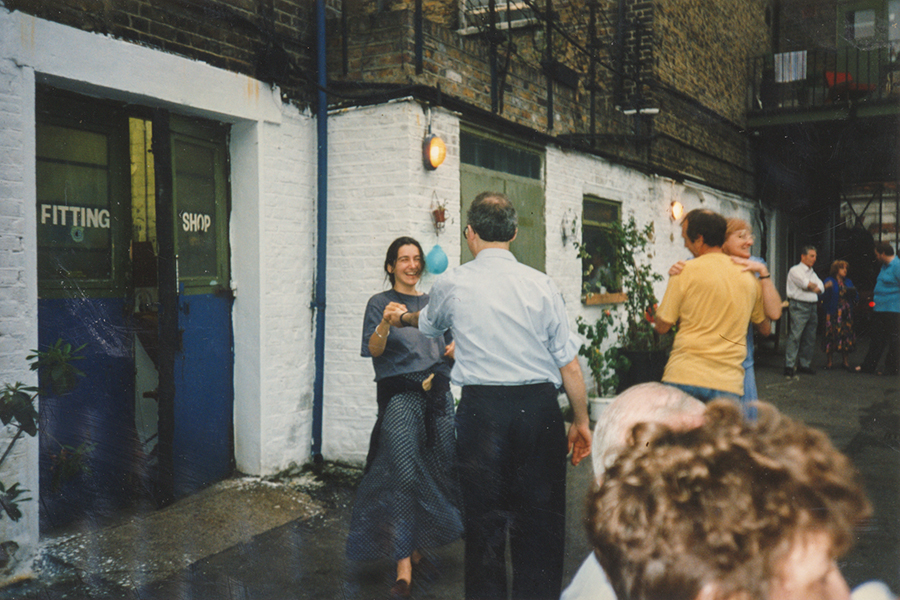From Kilburn to Kairos
Twenty-five years ago the Kilburn Night Shelter changed its name to Kairos Community Trust and started on a journey that led to the dedicated rehab and supported housing services that Kairos is known for today.
Here, Rory O’Connell outlines its origins and the earliest days, drawing on an interview in 2016 with co-founder Fr John Kitchen (whose comments appear in blue).
“We had an idea where we wanted to go, although it was always hit and miss and we were working it out on the hoof.” – Fr John Kitchen
The Kilburn Night Shelter was established in 1988 in north-west London with fairly simple aims. The original entry in the Charity Commission register states its primary activities as “Promoting the relief of poverty, sickness and distress of homeless persons within the London Borough of Camden and Brent in particular by providing night shelter for their temporary accommodation.”
Operating out of the Methodist Church in Kingsgate Road, London NW6 and run by nuns of Mother Teresa’s Sisters, the daily soup kitchen developed into a soup run to London’s West End (pictured below) and eventually a temporary night-shelter. In the meantime, Fr John Kitchen, of the Holy Ghost Fathers, had been struggling to cope with demands of local homeless people in Hendon where he was running a seminary. He became involved in the night-shelter when he was asked to say mass for the Kilburn homeless.
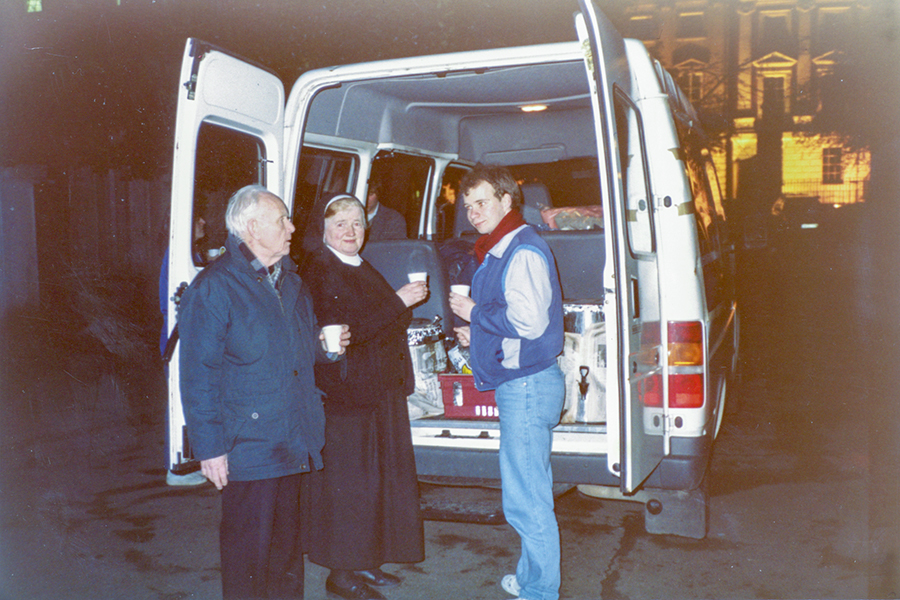
Outgrowing the facilities at Kilburn and prompted by the local Anglican priest, Nigel Ashridge, it was suggested that the Church of England’s property department might have unwanted premises that could be suitable for longer term use by the shelter. Together with Tony Walsh, who would become the co-founder of Kairos, Fr John went to see what was on offer.
“So we contacted them and a lady called me and said, ‘I’ll meet you down at Clapham Common on Tuesday evening at 4 o’clock!’ – or whatever it was – ‘there’s a house down there and I’ll show you the place.'”
That ‘house’ was actually the former Golden Arrow cafe at 146 Stonhouse Street, yards away from Clapham High Street and to become home to an assorted group of daily and long-term homeless men (and one woman), the first residents of what would become Kairos Community Trust. The year was 1991.
“So, anyway, we went and we met this lady and she showed us this house which was squatted in Stonhouse Street. It was the far end of… and it had been a little café and, like, you know, selling chips and fish, really greasy. I mean, the whole place was covered in grease, on the front area, the back and the ovens were there and the hob and everything was there. But up above was squatted and it was derelict and, you know, there were parts of the roof missing and there was rain coming in here there and everywhere, but, anyway, she said, ‘If you want, you could use this place.'”
The characteristics that would become defining features of a ‘Kairos’ development immediately came to the fore: volunteering, making do and attending to the basics of life, but underpinned by total abstinence and a deeper philosophy about giving homeless people opportunities to recover gradually, while recognising that that is not always a straightforward path.
“And she said, ‘Well, at the other end of the street, there’s two more houses and let’s go and have a look at those.’ So we went and one was the one with the old factory at the back, the big shed at the back kind of thing, and so we were just amazed at the amount of property – four big six-bedroomed houses, three storeys, and one of them with a big yard and, at the back, a big sort of shed… We took four of them right away.”
The Kilburn Night Shelter suddenly found itself the unexpected tenant of half a Victorian terrace of semi-derelict shops. The first task, was to evict the existing squatters and start to make the buildings habitable.
“So, we couldn’t believe it really, you know. They were all derelict and they were really in a bad state, I mean, some of them, you – sitting here, you look at the sky up above, you know, and through three storeys. So there were floors missing, there was roofs missing. I mean, there were walls which had no roof on at all. And there was just green moss growing down the walls on the inside. So it was a mess.”
Many of the original people who used the night shelter in Kilburn followed the move south of the river and were crucial during the earliest days at Stonhouse.
“We got Stonhouse Street going room by room. We had no money and we went out each day round the skips looking for materials. For food, we’d go down to Covent Garden during the daytime when the market was finished and take out food from the skips. That’s how we started and got going.”
The values and philosophy driving the Kilburn Night Shelter in Clapham, which would continue into Kairos, were expanded on by Fr John in The Gift of Time.
“Community is not family as such, but it does create belonging and it provides you in the most economical way with the means to live. We had nothing, but we had everything. Everyone contributed. Nobody got a free ride, although some people tried it! But they were all expected to help out, keep the place clean, help with cooking.”
An important development from the earliest days of occupying Stonhouse Street was to keep a register of residents. For 1992, this was just a simple A4 notebook, handwritten, listing names and an ‘entering’ and ‘leaving’ date. For 1992, the register lists 21 residents, the majority of the names conspicuously Irish, and a typical stay was around 12 weeks, though some only lasted a few days; four regular volunteers are also listed.
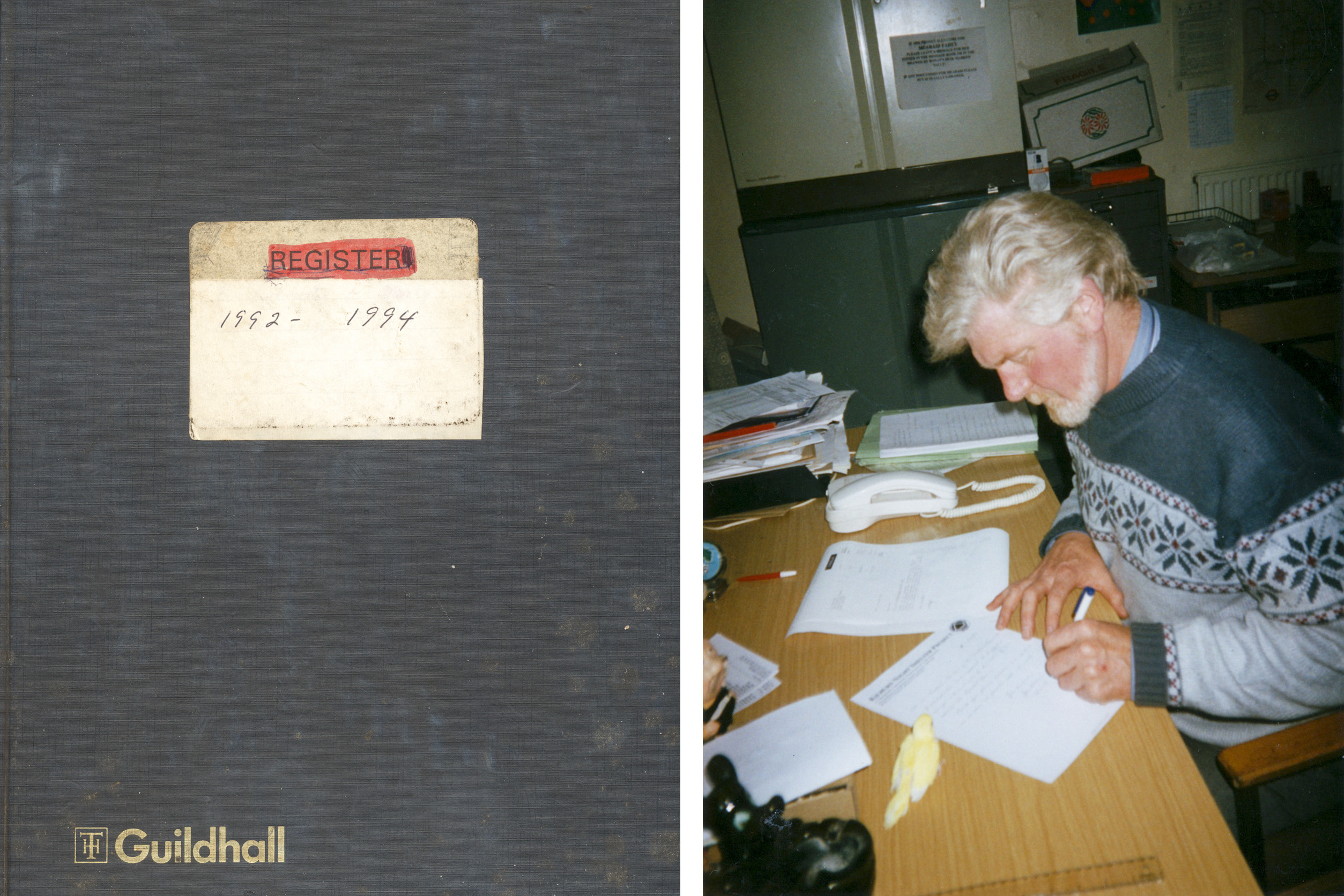
From 1993 onwards, the register became monthly and the regular volunteers had increased to six. These included Sister Louise, whose presence increased significantly during the year from once a fortnight in March to almost full-time by September. This reflected the growing importance of therapy that Sister Louise was developing and which was to become the distinguishing factor, along with ‘move-on’ housing, of Kairos’s identity and practice.
The unexpected availability of two empty shops, also belonging to the church, around the corner in Clapham High Street raised the profile of the whole project. The new charity shops also came with added accommodation although their condition was possibly even worse than what had been found at Stonhouse Street.

Social life, the opportunity for residents, friends, volunteers, and supporters to come to together around food and music was an important part of life at Stonhouse, as it would become in Kairos itself.
The people who were at Hendon used to come to Stonhouse Street. We formed a little group and every month we would have a party. There were a few volunteers, helpers from Mother Teresa’s crowd and from other people, up to 20 people. We’d all come together, guitars and singing, homeless people, people on the streets and each one would take it in turn…to provide the food.
A unique record of one of these gatherings was made in June 1993…
The move of the Kilburn Night Shelter to Stonhouse Street showed that, even with basic amenities and support, it was possible for a group of previously homeless alcoholics to achieve a degree of sobriety, economic stability and some recovery from the medical and mental effects of addiction. Stonhouse Street could only ever provide temporary respite. Finding stable long-term premises suitable for planned treatment and smaller houses for people to move on to with appropriate support became a priority for the project.
“We needed a way to help people that was more structured. That’s when Sally Martin and Betty Fleming came in. They were volunteers, but had experience of working with homeless people. Although we had a house meeting every morning where we would discuss problems and organise the day ahead, Betty and Sally took it to a different level. They would hold groups and get the therapy going, both as a group and as individuals.
“We realised that we needed a rehabilitation centre where therapy was the main process. And acquiring Bethwin Road enabled us to do that. Mossie Lyons, who took over from me, had just joined us [October ’97] and he, along with Betty, Karen Brooks, and Jim Finn, a trainee counsellor, moved into the squatted three-storey old vicarage. that’s where we began the next stage.”
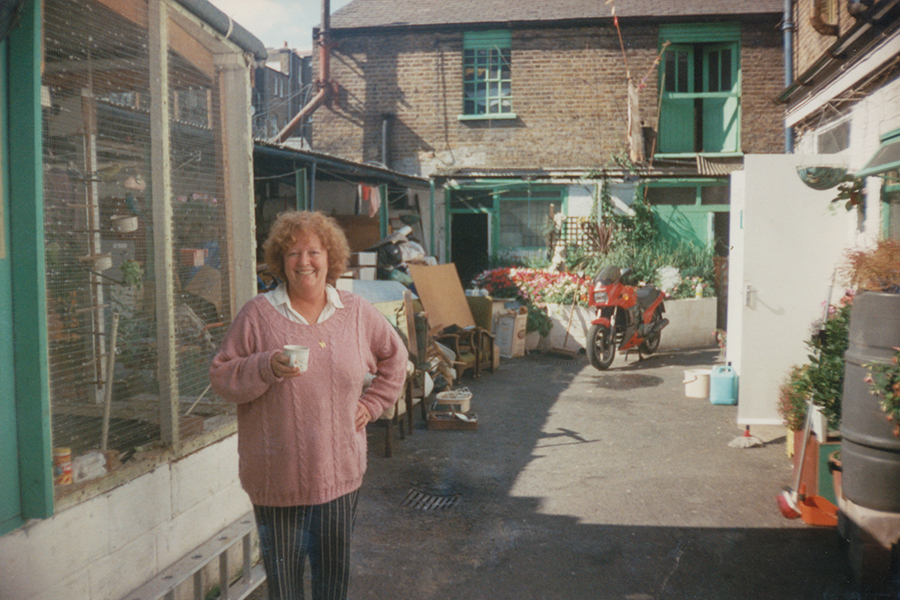
These developments also brought about another significant change. The original Kilburn Night Shelter had moved both beyond Kilburn, or even Clapham, and beyond providing a temporary solution to homelessness. Recalling the early years of Kairos ‘before Kairos’ in the 2012 Annual Report, John McAuley describes running on a budget of around £6,000 per year and managing an often-precarious financial situation. “It is hard to believe that within five years Kairos would change to an organisation with £1.2 million.”
The title of the organisation also needed to reflect this change, and to find a name that was neither limited by location or activity but still driven by the original intent and values of its founders and, in 1994, the Kilburn Night Shelter changed its name, to Kairos Community Trust.

